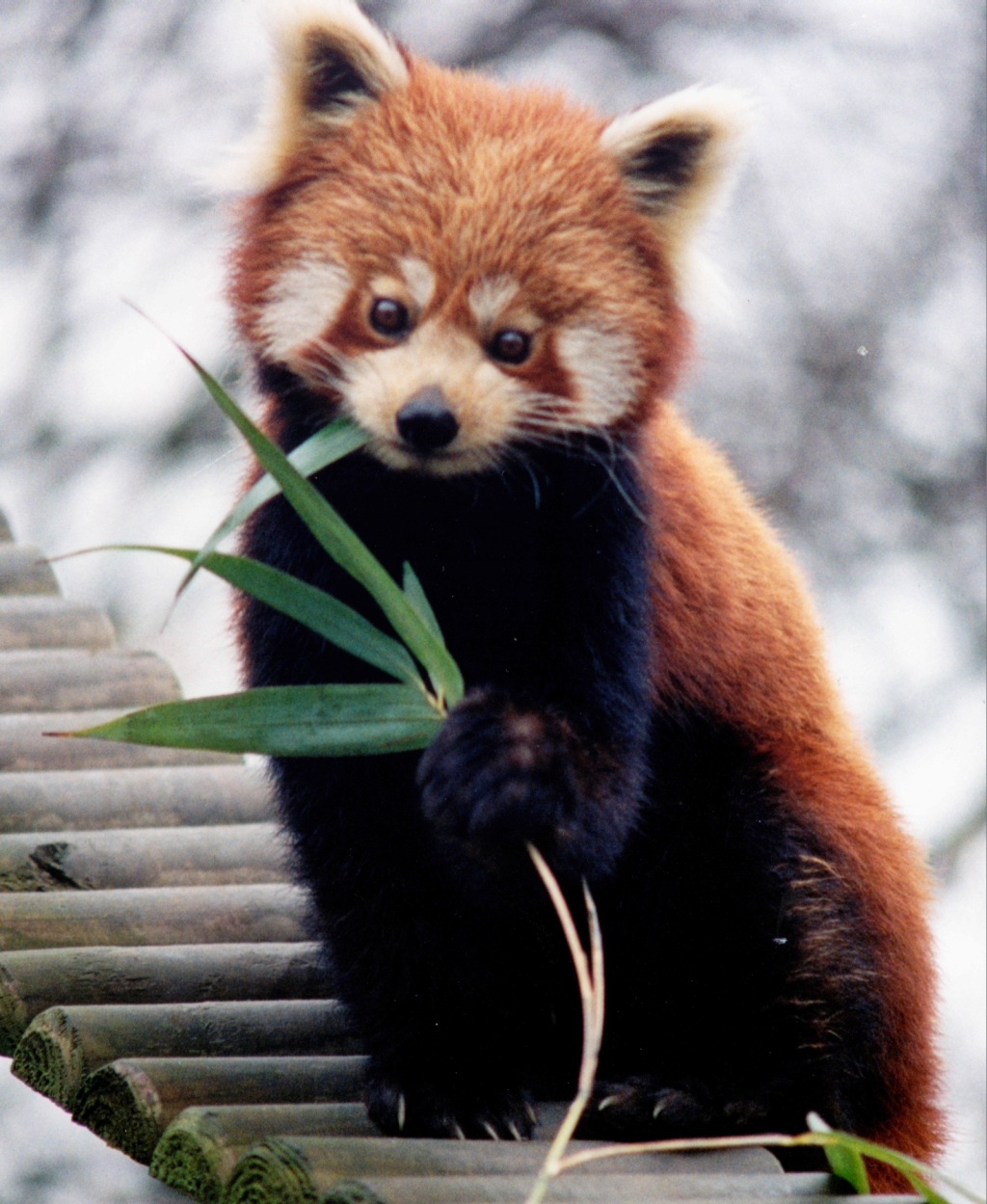 |
| Red Panda snacking Photo by Brunswyk |
Ailurus fulgens or the Red Panda
is not, in fact, a panda at all. It is actually the only living member of the
Ailuridae family. They are red black and white and strongly resemble racoons.
They have long tails that are bushy and striped. Their bodies are red and their
faces are white with red markings. They have long pointy ears. Their fur covers
their entire body, including the bottoms of their feet.
Red Panda Habitat, Range and
Territories
Red Pandas are found in
mountainous regions in the Sichuan and Yunnan Provinces of China. They are also
found in Myanmar, Nepal, India and Bhutan. They live in deciduous and
coniferous forests in temperate climates. Their primary source of food is
bamboo leaves, so they live in the small areas of these forests where bamboo is
available.
Adult Red Pandas are mainly
solitary creatures. They maintain territories that are between one and two
square miles in area. They mark these territories with their urine, anal gland
secretions and secretions from glands in the soles of their feet. Their
territories may overlap, but there is very little interaction between the
animals.
Red Panda Mating and Life Cycle
The mating season for the Red
Panda occurs in the early months of winter. During this time the mating males
and females will form short relationships. The female will gestate for roughly
134 days. During the gestation period, she will build a nest made of leaves and twigs in a
crevice or hollow tree. Female Red Pandas always give birth between 4:00 p.m.
and 9:00 a.m. and they will give birth to between one and four cubs.
Red Panda cubs will remain in
the nest for roughly three months. They will stay with their mother until the
start of the following mating season. They will be full grown in about one year
and sexually mature within a year and a half. Adult Red Pandas weigh between
seven and fourteen pounds and have an average length of 42 inches from their
heads to the tips of their tails. They can be expected to live an average of eight
to ten years in the wild.
Red Panda Diet
Red Pandas are oddly classified
as carnivores, when, in fact, they are decidedly omnivorous. They subsist
mainly on the leaves of small bamboo trees, but they also eat bird eggs, the
leaves off of other plants and berries.
Red Panda Status and
Conservation
Red Pandas are on the IUCN
endangered species list. Their main threat is the deforestation of their
natural habitat. They are left with very little options for habitats, as it is.
Despite the fact that they are well spread out in their region, they are
confined to small patches of woods, where bamboo grows. There is currently an
estimated 2,500 adult Red Pandas in the wild. However, there are hundreds of
them kept in captivity, where they seem to thrive. Hopefully, a little
awareness and a lot of careful breeding and habitat conservation will save
these animals from extinction.
Sources
Red Panda, retrieved 12/20/09,
redpandanetwork.org/redpanda.php
Heath, Terrell & Platnick,
Josh, Ailurus fulgens, retrieved 12/20/09,
animaldiversity.ummz.umich.edu/sile/accounts/information/Ailurus_fulgens.html
No comments:
Post a Comment